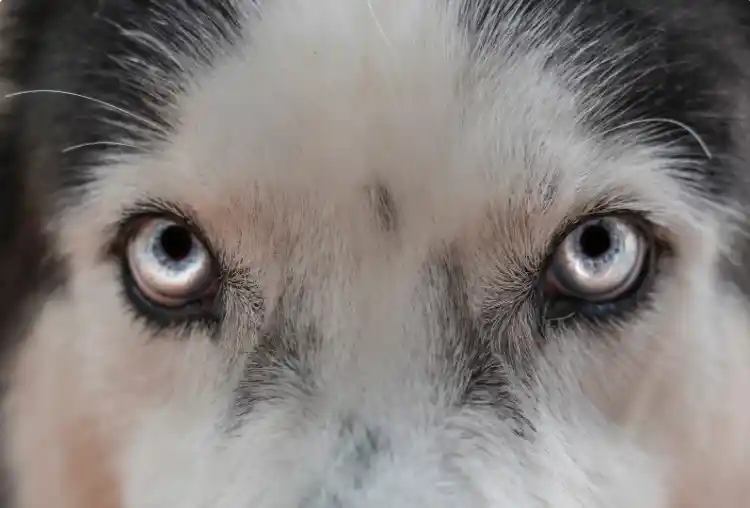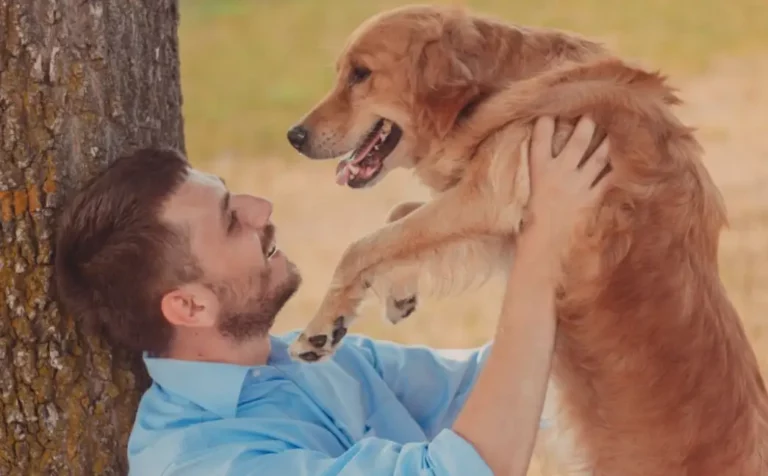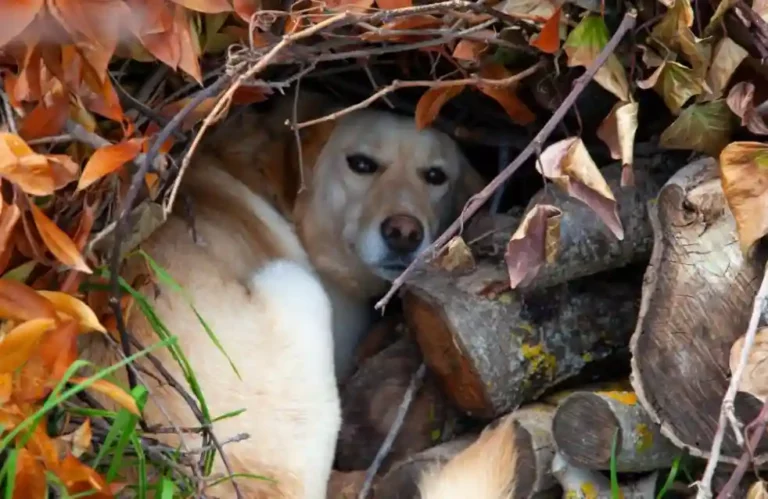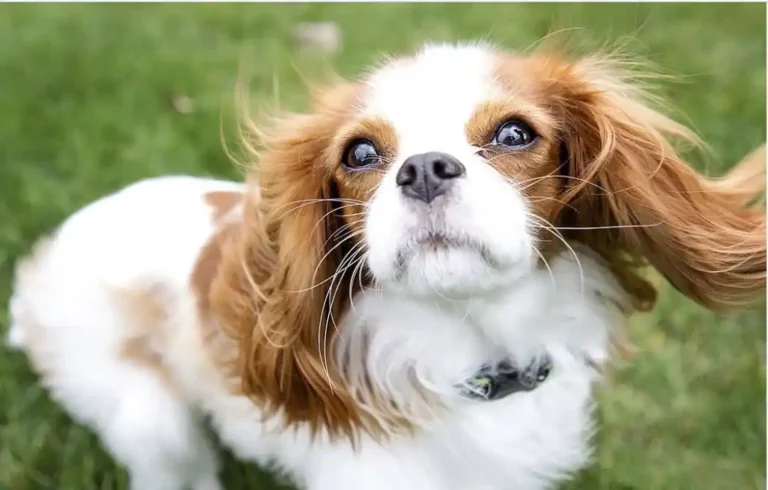Facts Of Earthdog Breeds Training, Trails And Test [Expert Advice]
Earthdog trials have been around since the early 1980s to test dogs’ instincts for going underground and hunting quarry. These exciting events allow dogs to showcase their talents in simulated underground tunnels while their handlers evaluate their working abilities.
Dogs as small as 10 pounds up to 20 inches tall can compete, including Cairn Terriers, Dachshunds, and other breeds with digging and hunting heritage. Researchers at Barnard College’s Dog Cognition Lab have studied Earthdog breeds like Dachshunds and Terriers to understand their propensity for underground work.
The tunnels used in Earthdog trials are approximately 30 feet long, with turns and false dens representing an underground tunnel system. At the end is a caged rat to simulate a quarry that the dog must work to find and mark. There are 3 levels offered:
- Intro – 10-12 feet long with 1 turn
- Junior – 30 feet with 2 turns
- Senior – 30 feet with 3 turns and false entrance
The judges score the dog based on its willingness to enter the tunnel, navigate the turns, show interest in the quarry, and demonstrate overall working ability. Handlers cannot physically guide or motivate the dog beyond verbal encouragement.
To prepare for an Earthdog test,
- Work on confidence building and rewarding natural hunting drive in short mock tunnels.
- Teach a solid recall and practice entering low openings.
- Focus work when around rats is also helpful for dogs to learn quarry indication behaviors like barking or scratching.
These exciting tests let dogs put their instincts to work in a safe, simulated environment. If you effectively train your small hunting hound, it can earn enjoyable titles, as its initial breeding intended. Look for local Earthdog clubs online and see if your dog has what it takes for this underground sport.
![Facts Of Earthdog Breeds Training, Trails And Test [Expert Advice] 1 Earthdog Breeds Training](https://www.puppiesdiary.com/wp-content/uploads/2023/11/Earthdog-Breeds-Training.jpg)
Table of Contents
- What does an Earthdog mean?
- History of Earthdogs and Trails
- Facts of Earthdog tests and den trials
- Which breeds are allowed in Earthdog trials?
- What Equipment and supplies are needed for Earthdog trials and training?
- How to Start Earthdog Training?
- Earthdog Competitions And Organization
- What are things to keep in mind regarding passing Earthdog tests?
- What is nose work?
- Conclusion
What does an Earthdog mean?
Earthdogs are small hunting dogs explicitly bred to go underground to chase quarry out of their caves and dens. Their origins trace back centuries when farmers and hunters utilized them to control vermin populations of “rabbits, foxes, badgers, and rodents” that could cause damage to crops and livestock.
Common Earthdog breeds include Dachshunds, Cairn Terriers, Yorkshire Terriers, and various tiny terriers. These dogs typically weigh under 20 pounds and stand less than 10-12 inches tall to fit into underground tunnels and passageways.
Key attributes that make Earthdogs well-suited for their traditional working role include:
- Keen sense of smell to track prey
- Fearless nature and eagerness to explore underground
- Athletic build for scrambling through tight spaces
- Strong prey drive and ability to mark or chase quarry
- The hounds bark or vocalize when they locate the quarry.
Genetic research at the University of Massachusetts has identified differences in essential olfactory receptor genes in breeds like Bloodhounds and Beagles compared to non-scent hounds.
In Earthdog trials and competitions, dogs are tested for their instincts in simulated dens and tunnels, recreating their historical use for hunting. Here, their talents for “scent work, agility, drive, and hunting aptitude” are evaluated and scored. Many owners enjoy channeling their dogs’ Earthdog abilities into the fun sport.
History of Earthdogs and Trails
Earthdogs have a long history dating back thousands of years as hunting companions that would chase quarry into their burrows and dens. Breeds like Dachshunds and Terriers were developed several hundred years ago specifically for their talents in underground hunting and vermin control.
The Dachshund, for example, originated in the 15th century in Germany and Italy to hunt badgers and other burrowing animals. Terriers have also developed centuries ago in the British Isles to hunt “foxes, rodents, and other vermin above and below ground.”
Formalized testing of dogs’ hunting abilities in artificial dens and tunnels began in the early 20th century. The Dachshund Club of America held the first organized “den trials” in 1935 to evaluate Dachshunds’ working skills.
In 1941, German Terrier clubs created “working certificates” for dogs showing promise in den work. Hunting enthusiasts in the United States developed modern Earthdog tests in the 1970s and 1980s to preserve and evaluate the instincts of hunting breeds.
The American Kennel Club first sanctioned Earthdog tests in 1994, with over 800 trials annually across North America today. While no longer used for actual hunting, Earthdog tests allow dogs to demonstrate their heritage and talents.
Facts of Earthdog tests and den trials
The Earthdog tests assess a dog’s instincts and abilities for underground hunting work. They measure talents like “scenting, navigation in tunnels, interest in quarry, and working drive” that were historically essential for the traditional roles of Earthdog breeds.
![Facts Of Earthdog Breeds Training, Trails And Test [Expert Advice] 2 Earthdog tests and den trials](https://www.puppiesdiary.com/wp-content/uploads/2023/11/Earthdog-tests-and-den-trials.jpg)
- The tests involve simulated underground dens and tunnels with turns, false entrances/exits, and caged rats or another quarry at the end to mimic real hunting situations.
- The tunnels used are approximately 30 feet long. Dogs must enter tunnels independently and work through them by scent to find the quarry.
- Scoring evaluates the dog’s willingness to enter, ability to negotiate tunnels and turns, indication and interest when reaching the quarry, and overall hunting drive.
- Handlers can verbally encourage but not physically guide or motivate dogs during the tests.
- Trials are non-competitive, with dogs judged against a standard rather than each other. Dogs receive titles for passing each level.
- Three test levels offered are Intro (10-12ft), Junior (30ft with 2 turns), and Senior (30ft with 3 turns and false entrance).
- Preparation involves “building confidence, cultivating natural hunting instincts, training focus and recall.”
- While simulated, the tests allow dogs to experience and showcase their heritage talents safely.
Which breeds are allowed in Earthdog trials?
Purebred dogs can compete in Earthdog events sanctioned by organizations like the AKC. Eligible breeds must have physical and behavioral attributes suited for underground hunting work.
Dogs should be small and compact, typically under 20 inches tall and 20 pounds to fit into tunnels. Tenacious, high-drive personalities are ideal for hunting prey underground actively.
“Keen sense of smell, digging instinct, problem-solving ability, and trainability” are other critical traits in Earthdog breeds. Examples of breeds commonly entered include “Dachshunds, Cairn Terriers, Miniature Schnauzers, Yorkshire Terriers, Standard, Mini Dachshunds, and various small terrier breeds.”
Certain breeds like Collies, Sheltys, and Spaniels can enter but are limited to above-ground Instinct Tests only. Dogs must be obedient and work well off-leash in the field. Dogs in “heat, deaf and blind dogs” cannot compete.
Mix-breed dogs or dogs without a purebred pedigree are not eligible per AKC and other organizations’ Earthdog regulations. Ideally, Earthdogs have the right blend of “size, drive, scenting ability, problem-solving, and trainability” to succeed in den work.
What Equipment and supplies are needed for Earthdog trials and training?
- Tunnels – Wooden boxes or tubes 10-50 feet long. You can start with cardboard boxes or short lengths.
- Quarry – Live or fake rats in a cage at the tunnel end. Fake rats have rat scents.
- Harnesses and Leashes – Used for restraint, control, and guide dogs through tunnels. Long lines allow pulling dogs out.
- Bait bags – Treats to reward and motivate dogs during training. Wear the soft bait bags on a belt.
- Gloves – Protect hands when guiding dogs underground.
- Knee pads – Cushion knees when the handler crawls into tunnels during training.
- Covered boxes – For crate training dogs to enter dark spaces.
- Clickers – Marker training for improving confidence and performance.
- Treats – Positive reinforcement rewards like tiny bits of “hot dog, cheese, or commercial treats.”
- Flashlight – Helps see in dark tunnels when coaching dogs.
- Stopwatch – Times working periods and meets competition requirements.
The right combination of tunnels, bait bags, crates, and motivation tools like treats, toys, and clickers will prepare an Earthdog for success. Safety gear like gloves and knee pads also helps.
How to Start Earthdog Training?
Start scenting games and confidence building as early as 6 months old. Hide the treats in “boxes, bags, and tunnels.” The best age to begin formal Earthdog training is 9-12 months when the sense of smell has fully developed.
Use short cardboard tunnels or boxes to introduce the idea of going through dark spaces. Reward with treats. Gradually increase tunnel length. Encourage the dog to follow scent trails and food lures inside.
![Facts Of Earthdog Breeds Training, Trails And Test [Expert Advice] 3 Start Earthdog Training](https://www.puppiesdiary.com/wp-content/uploads/2023/11/Start-Earthdog-Training.jpg)
- Add box “den” with treats at the end to simulate quarry location. The reward for reaching den.
- Introduce turns and blockages to build navigation skills. Use food motivation.
- Practice recalls from tunnels. Teach commands like “find the rat!” to direct their hunting drive.
- Work up to longer intricate tunnel systems. You can add fake or live rats in cages.
- Once you learn the basics, your instincts will guide your progress. Training enables tapping into those instincts.
- Consider working with a mentor or trainer, especially if you plan to compete. They can prevent training mistakes.
- Patience and positive reinforcement are key. Make sessions fun! Earthdog abilities evolve through proper foundations.
Introducing your dog to the quarry during Earthdog training
Use a caged rat (real or fake) to represent the quarry. Move the cage around to spark interest. With the dog leashed, tap the cage and excitedly cue “Get the rat!” to incite prey drive. Match and encourage the dog’s arousal. Move the cage just out of reach to increase excitement.
Reward all reactions to rat – staring, barking, pawing, lunging. Mark and treat each response. After interest is high, drop the leash and allow the dog to run at and “work” the rat cage for 2-3 minutes. Prevent actual contact or biting of the cage. Use commands like “Leave it” if needed.
After an active period, settle and relax the dog before repeating. It teaches impulse control. Gradually increase the working time as the dog builds focus and drive.
Proper rat introduction taps into natural hunting instincts and creates the foundation for underground work. Patience is key. Let prey move, and interest develop through positive reinforcement and fostering natural behaviors.
Tips for introducing your dog to tunnels in Earthdog training
Start with a “short, straight cardboard tube or tunnel” approximately 10 feet long. Hold an excited, off-leash dog at the entrance and use a cue like “Get the rat!” to direct into the tunnel. Have the caged rats been placed at the end to motivate them to enter and traverse the tunnel? Do not force or physically push the dog into the tunnel. Let them enter voluntarily.
![Facts Of Earthdog Breeds Training, Trails And Test [Expert Advice] 4 tunnels in Earthdog training](https://www.puppiesdiary.com/wp-content/uploads/2023/11/tunnels-in-Earthdog-training.jpg)
- Use food rewards and praise for any initiative to step into the tunnel. Mark and treat each forward movement.
- If the dog is too fearful, go back to desensitizing with boxes and crates first. Tunnels can be short and wide at first.
- Once the dog willingly enters, slowly add length and turns as they gain experience. Move the rat cage as needed.
- Practice “Ratting” by releasing the dog into the tunnel and allowing them to work the rat cage for a short period.
- Work up to longer, more complex tunnels. Fading food rewards as the caged rat becomes the main incentive.
- Remain positive throughout the process. Curiosity and prey develop tunnel interest.
Training small Terriers for Earthdog tunnel work
Training tiny Terriers start with short and straight tunnels around 4-6 feet long and 9×9 inches wide. You can use cardboard or wood. Prop up the tunnel so light filters in at first. Later, progress to fully enclosed. Use food rewards (kibble) to motivate people to enter and traverse the tunnel. Toss treats in progressively further. Mark and reward forward movement.
- Once completing short tunnels, build longer, multi-segment tunnels with turns. Keep 9×9 inch width.
- At 12 months old, introduce live or fake caged “quarry” at the tunnel end to spark prey drive. Use caution.
- Only train with the quarry monthly so the dog doesn’t get bored. You can use rats, squirrels, etc. Keep the quarry caged for safety.
- Please add tunnel bars in the location where you plan to place the quarry cage. Cut a trap door above this section.
- Teach the dog to run through the full tunnel before allowing access to the quarry. It prevents bypassing the tunnel.
- Open the trap door once the dog reaches the quarry. Reward contact with cage, barking. Teach “work quarry” behaviors.
- Practice recalls – whistle to get attention, wait for the dog to exit the tunnel, reward for returning.
- Work slowly, and use rewards and praise. Allow breed instincts and maturity to develop. Seek mentor guidance to avoid mistakes.
- Terriers can excel at tunnel work as they breed with proper technique and patience.
Advantage of increasing difficulty in Earthdog tunnel training
Increase the difficulty once the dog completes a straight tunnel, and add gentle turns using corner pieces. Start with 1-2 turns. Build longer tunnels using multiple straight sections connected with turns and junctions. Add 5-10 ft segments over time.
Construct “Y” and “T” branches to simulate a quarry’s burrow system with multiple paths. Start easy. Place blockages like baffles or wire gates that the dog must navigate around. Adds problem-solving.
- Bury a portion of the tunnel or sink sections into the ground. Provides an enclosed feeling.
- Incorporate false dens and entrances that lead nowhere to test the dog’s determination.
- For advanced dogs, create a tunnel system with “multiple paths, turns, blocks, and false leads” that mimic a real underground network.
- When transitioning to a new tunnel, use food rewards and praise to rebuild confidence.
- Increase distance from the handler at the entrance as the dog’s experience grows. Test willingness to enter and work independently.
- Move the quarry cage within the tunnel system to motivate exploring new sections.
- Challenge the dog’s existing skills without overfacing them. Build slowly and positively.
- Vary routines to prevent boredom. Change configurations. Add distractions gradually.
Patience and creativity in tunnel design will continue developing the dog’s natural abilities over time.
Earthdog Competitions And Organization
There are organized Earthdog competitions that dogs and handlers can participate in:
- The American Kennel Club sanctions various Earthdog tests across North America each year. In 2022, there were over 800 AKC-licensed Earthdog events.
- Tests are non-competitive – dogs are scored against a standard rather than each other. Passing each level earns you a title.
- Tests consist of the Intro, Junior, and Senior Earthdog levels using increasingly complex tunnels.
- Dogs must be AKC-registered purebreds to compete in AKC Earthdog. Mixed breeds cannot enter.
- Owners don’t need a breed club membership to enter their registered dogs.
- The American Working Terrier Association (AWTA) also holds non-competitive den trials across the U.S.
- AWTA trials involve natural underground tunnels and dens. Eligible breeds include Parson Russell Terriers, Jack Russell Terriers, Dachshunds, and Cairn Terriers.
- Other clubs, like the American Dachshund Club, offer regional Earthdog tests as well.
- Dog breeders developed breeds with specific natural talents, and dogs can showcase their heritage through tests.
- To get involved, search for local clubs online and discuss upcoming events.
AKC Earthdog tests
The American Kennel Club (AKC) sanctions various Earthdog tests across the United States and Canada annually. Tests consist of 3 levels – Introduction to Quarry, Junior Earthdog, and Senior Earthdog. Dogs earn titles by passing each one.
Tests involve simulated underground tunnels with increasing complexity and challenges at higher levels. Only AKC-registered purebred dogs are allowed to compete in AKC Earthdog events. Mixed-breed dogs are ineligible.
The AKC has an approved list of Earthdog breeds that are eligible:
- Cairn Terriers
- Yorkshire Terriers
- Wire Fox Terriers
- Bedlington Terriers
- ·West Highland White Terriers
- Smooth Fox Terriers
- Several others
Owners of breeds not on this list can appeal to AKC for approval on a probationary basis. Local kennel clubs or online sources provide information on upcoming licensed AKC Earthdog tests across the U.S.
While simulated, these events allow various small terrier and Dachshund breeds to demonstrate their heritage instincts and talents in a safe, controlled environment.
What are things to keep in mind regarding passing Earthdog tests?
Even dogs with natural solid hunting drive and ability often need training and introduction to do well in formal Earthdog tests. While the tests evaluate innate talents, the tunnels, quarry, and setup differ from real-life hunting situations.
![Facts Of Earthdog Breeds Training, Trails And Test [Expert Advice] 5 passing Earthdog tests](https://www.puppiesdiary.com/wp-content/uploads/2023/11/passing-Earthdog-tests.jpg)
Dogs need to learn how to apply their instincts in a controlled trial environment that is new to them. Introductory classes familiarize dogs with “tunnel navigation, scents, caged quarry, confinement, and commands” involved. A hunting drive is an excellent starting point, but handling skills, focus, and training are also required to pass trials.
Be patient, and don’t assume natural ability equals instant trial success. Use classes to shape abilities to the trial context. Work with an experienced mentor or club. Dogs and handlers new to Earthdog often make training mistakes that hinder progress. A dog’s heritage abilities will likely translate into success in the trials they were bred for with proper technique, maturity, and time. The tests ultimately allow dogs to demonstrate their breeding safely for all to enjoy.
What is nose work?
Earthdog nose work refers to various scent detection activities and sports that engage a dog’s natural sense of smell to search for and locate a specific target odor or object. Some key things to know about nose work:
- The goal is for the dog to use its olfactory abilities to find a target scent hidden in one of “several boxes, containers, rooms, or vehicles.”
- Familiar target scents include birch, anise, clove, and lavender essential oils. Using food scents or toys is also possible.
- Handlers cannot guide the dog but verbally praise and encourage them during the search.
- Nose work builds confidence, mental stimulation, and bonding through this cooperative activity.
- Fun novelty searches can be done at home, while formal competitions test skills in different environments with increased difficulty.
- Competitive nose work trials have specific rules and titles to earn as dogs progress to higher levels.
- The activity taps into canine instincts they love using – hunting, scenting, and problem-solving. It is a constructive outlet for these drives.
- Overall, nose work is a great way to provide dogs with an enriching mental and physical activity that engages their most vital sense – their nose!
www.puppiesdiary.com
Conclusion
Earthdog trials offer an exciting opportunity for small hunting breeds to demonstrate their heritage talents in den work and underground hunting. Through simulated tunnels and dens, dogs can test their instincts for scenting, navigation, quarry interest, driving, and more in a safe and controlled environment.
Earthdogs can thrive in these tests they were initially bred to perform, with proper socialization, training, and confidence-building introductions. While challenging, Earthdog titles are a badge of honor rewarding canine abilities that have served us over centuries. For handlers seeking a way to tap into their dogs’ breeding constructively, Earthdog events can strengthen relationship bonds while allowing their terriers and dachshunds to showcase the abilities encoded in their DNA.

![Will My Dog Come Back If I Let Him Outside? [5 Tips to train] 6 Will My Dog Come Back If I Let Him Outside? [5 Tips to train]](https://www.puppiesdiary.com/wp-content/uploads/2023/04/Will-My-Dog-Come-Back-If-I-Let-Him-Outside-768x476.webp)




![Is It Bad That I Can Feel My Dog's Microchip? [Vet Conclusion] 11 Is It Bad That I Can Feel My Dog’s Microchip? [Vet Conclusion]](https://www.puppiesdiary.com/wp-content/uploads/2023/02/Is-It-Bad-That-I-Can-Feel-My-Dogs-Microchip-768x500.webp)